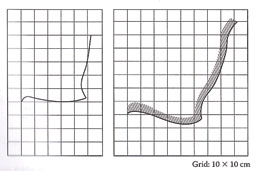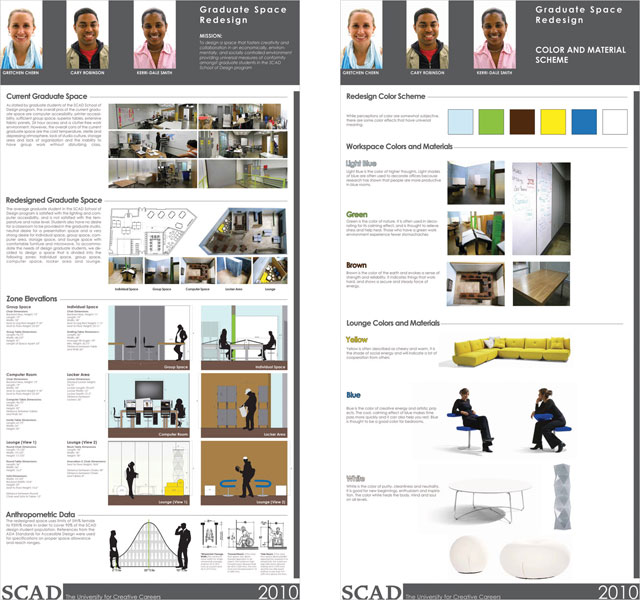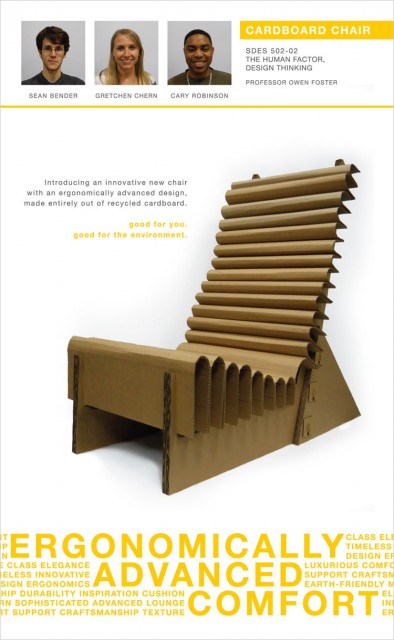The Human Factor: Design Thinking

Seat profiles of chairs.
This introductory class helped me understand the physical and emotional human factors that need to be considered with every design project — from ergonomics and usability to lighting and color. Coming from a graphic design background, the physical factors were especially new to me. I learned how to find and use anthropometric data as well as dimensions for interior spaces to complete several different projects. These projects helped prepare me for the more profound design problems I would come across in later classes.
Cardboard Chair
The objective of this assignment was to create a chair out of cardboard and glue that could hold the weight of our professor. The chair also needed to be comfortable for every student in the class, from the smallest female to the tallest male. Each team member sketched 10 chair designs and the class decided which design each group would have to build. My teammate Sean Bender’s design was chosen for our group, and we had less than one week to complete the project.
I found a diagram for the “ideal easy chair seat profile for minimum subjective complaints” in the book Bodyspace. We adjusted our design to include this profile for comfort.
The three of us all participated in the construction of the chair, and I created the advertisement for our group. Our chair was a success and held the weight of every person who sat in it.
Graduate Space Redesign
For this project, our objective was to redesign the graduate space in Gulfstream Center for Industrial Design. Our group collected data from student surveys in order to find out how the current space was meeting user needs and what needs were not yet being addressed.
After evaluating our survey results, we decided to divide the graduate space into five sections. Each space would meet a different student usage need. The current space was completely open, and there were many complaints about distractions from all the different types of activities going on. Graduate students were also lacking any personal storage space.
We designed a new floor plan to meet these needs, then we started planning what colors and furniture we would use. We took anthropometric data and ADA Standards for Accessible Design into consideration, and we created zone elevations to display the proper measurements. We created an architectural model, a presentation board and a materials board to go along with our presentation.



Related posts: